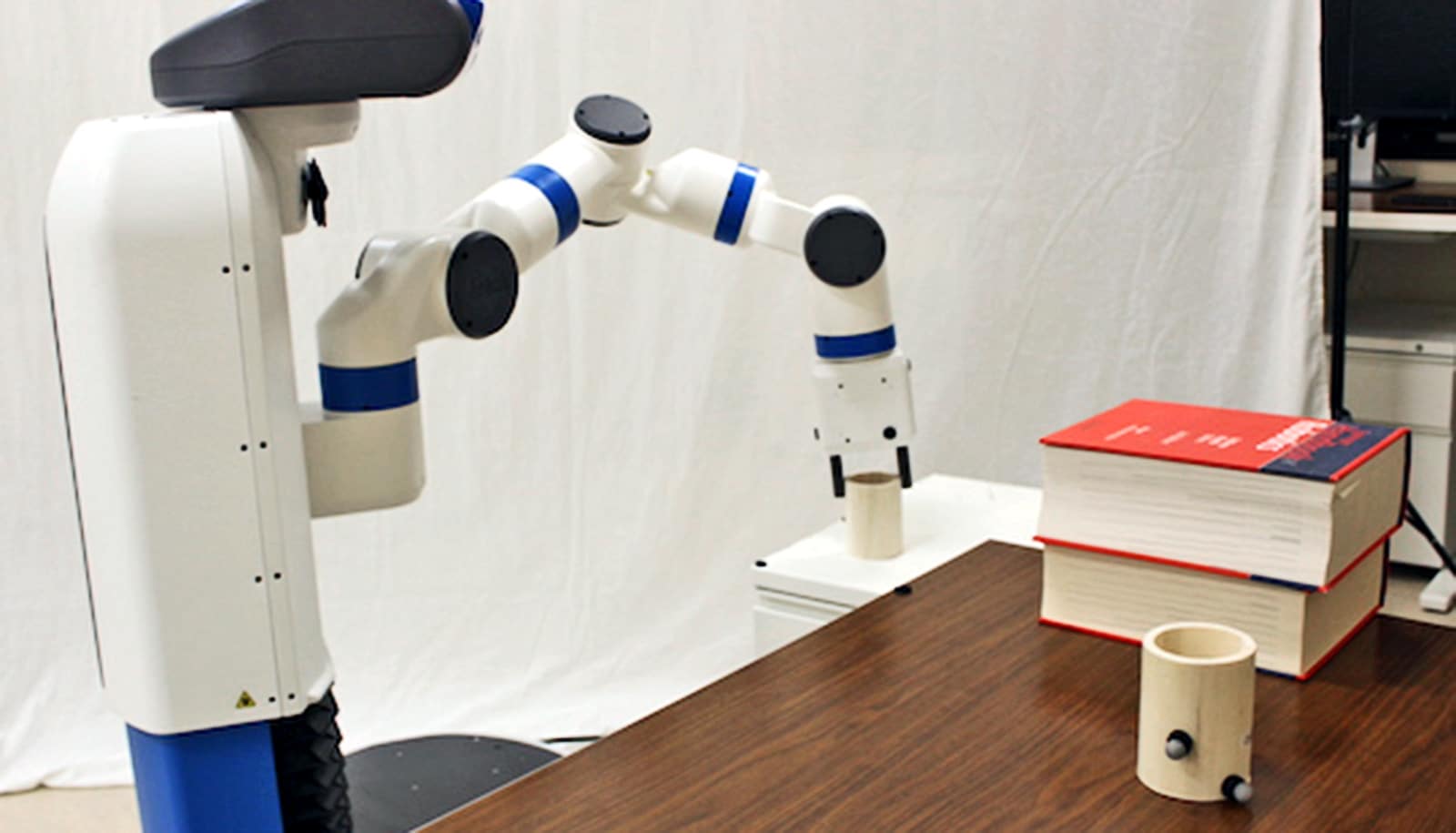
Researchers have come up with a new strategy that allows humans to help robots “see” their environments and carry out tasks.
Just like us, robots can’t see through walls. Sometimes they need a little help to get where they’re going.
The strategy called Bayesian Learning IN the Dark—BLIND, for short—is a new solution to the long-standing problem of motion planning for robots that work in environments where not everything is clearly visible all the time.
The algorithm keeps a human in the loop to “augment robot perception and, importantly, prevent the execution of unsafe motion,” according to the study.
To do so, researchers at Rice University combined Bayesian inverse reinforcement learning (by which a system learns from continually updated information and experience) with established motion planning techniques to assist robots that have “high degrees of freedom”—that is, a lot of moving parts.
To test BLIND, the researchers directed a Fetch robot, an articulated arm with seven joints, to grab a small cylinder from a table and move it to another, but in doing so it had to move past a barrier.
“If you have more joints, instructions to the robot are complicated,” says Carlos Quintero-Peña of the George R. Brown School of Engineering. “If you’re directing a human, you can just say, ‘Lift up your hand.’”
But a robot’s programmers have to be specific about the movement of each joint at each point in its trajectory, especially when obstacles block the machine’s “view” of its target.
Rather than programming a trajectory up front, BLIND inserts a human mid-process to refine the choreographed options—or best guesses—suggested by the robot’s algorithm.
“BLIND allows us to take information in the human’s head and compute our trajectories in this high-degree-of-freedom space,” Quintero-Peña says.
“We use a specific way of feedback called critique, basically a binary form of feedback where the human is given labels on pieces of the trajectory,” he says.
These labels appear as connected green dots that represent possible paths. As BLIND steps from dot to dot, the human approves or rejects each movement to refine the path, avoiding obstacles as efficiently as possible.
“It’s an easy interface for people to use, because we can say, ‘I like this’ or ‘I don’t like that,’ and the robot uses this information to plan,” says Constantinos Chamzas of the George R. Brown School of Engineering. Once rewarded with an approved set of movements, the robot can carry out its task, he says.
“One of the most important things here is that human preferences are hard to describe with a mathematical formula,” Quintero-Peña says. “Our work simplifies human-robot relationships by incorporating human preferences. That’s how I think applications will get the most benefit from this work.”
“This work wonderfully exemplifies how a little, but targeted, human intervention can significantly enhance the capabilities of robots to execute complex tasks in environments where some parts are completely unknown to the robot but known to the human,” says computer scientists Lydia Kavraki, a robotics pioneer whose resume includes advanced programming for NASA’s humanoid Robonaut aboard the International Space Station.
The researchers presented the work at the Institute of Electrical and Electronics Engineers’ International Conference on Robotics and Automation.
The National Science Foundation supported the research.
Source: Rice University